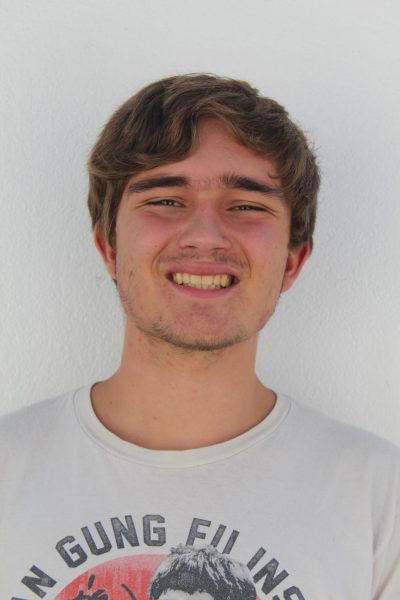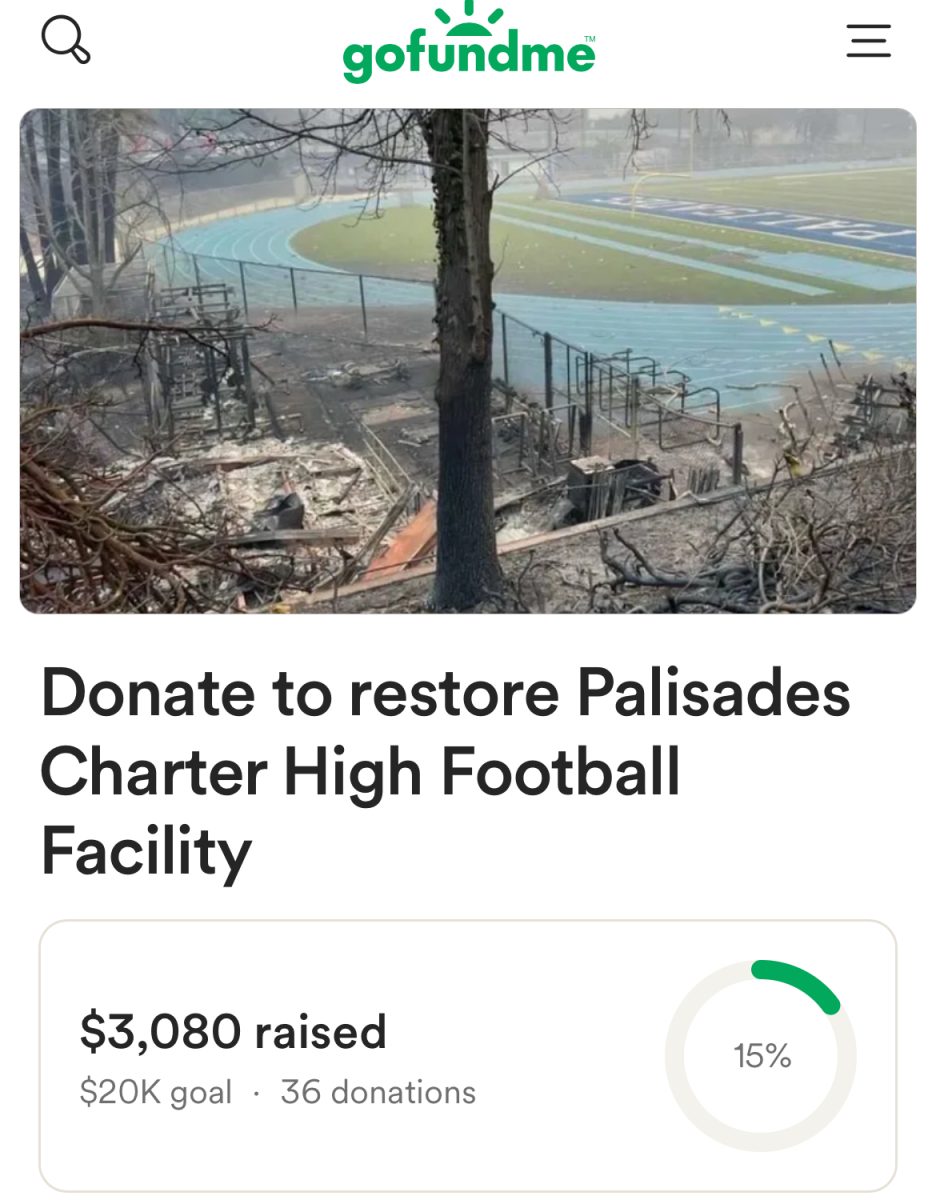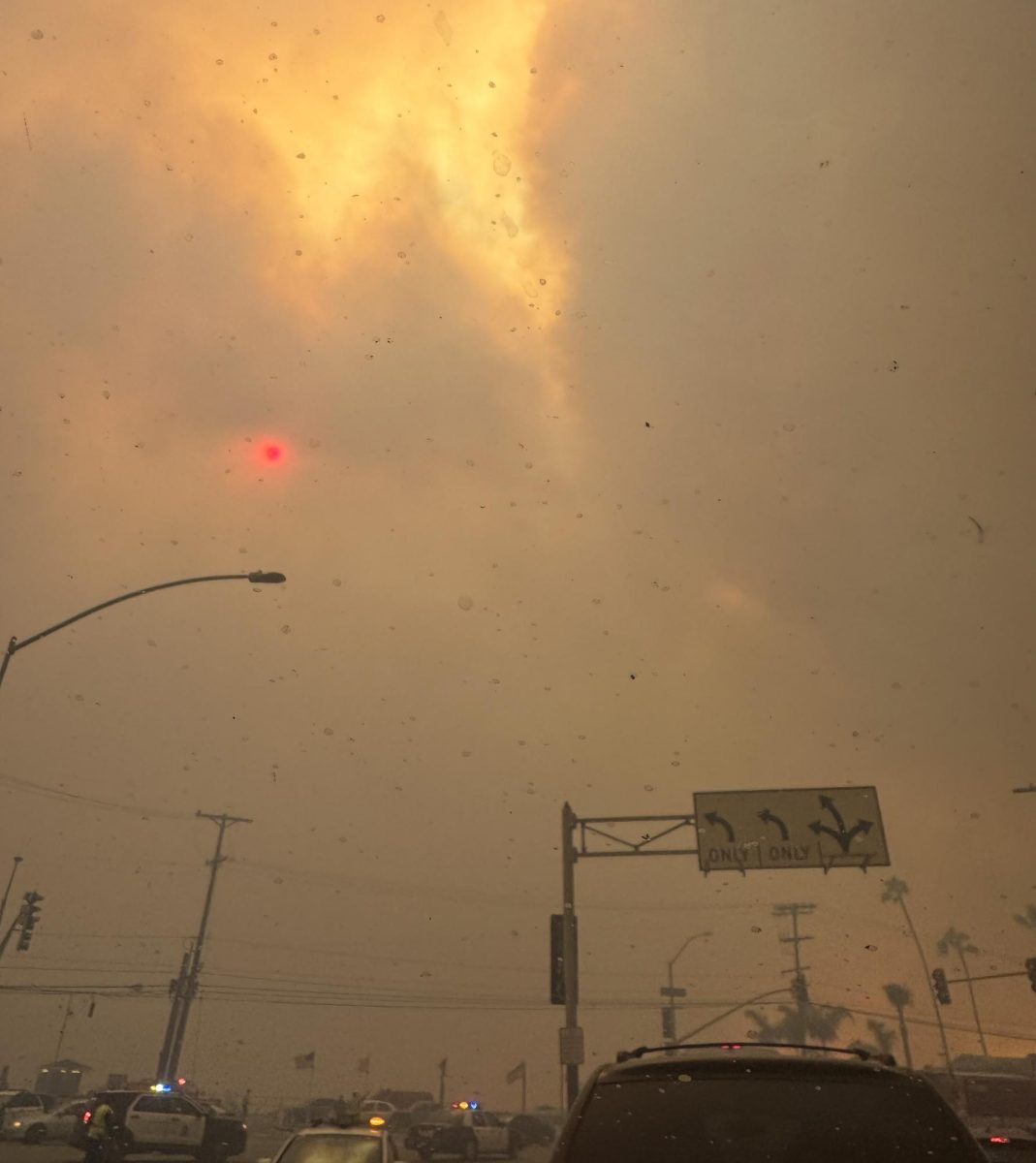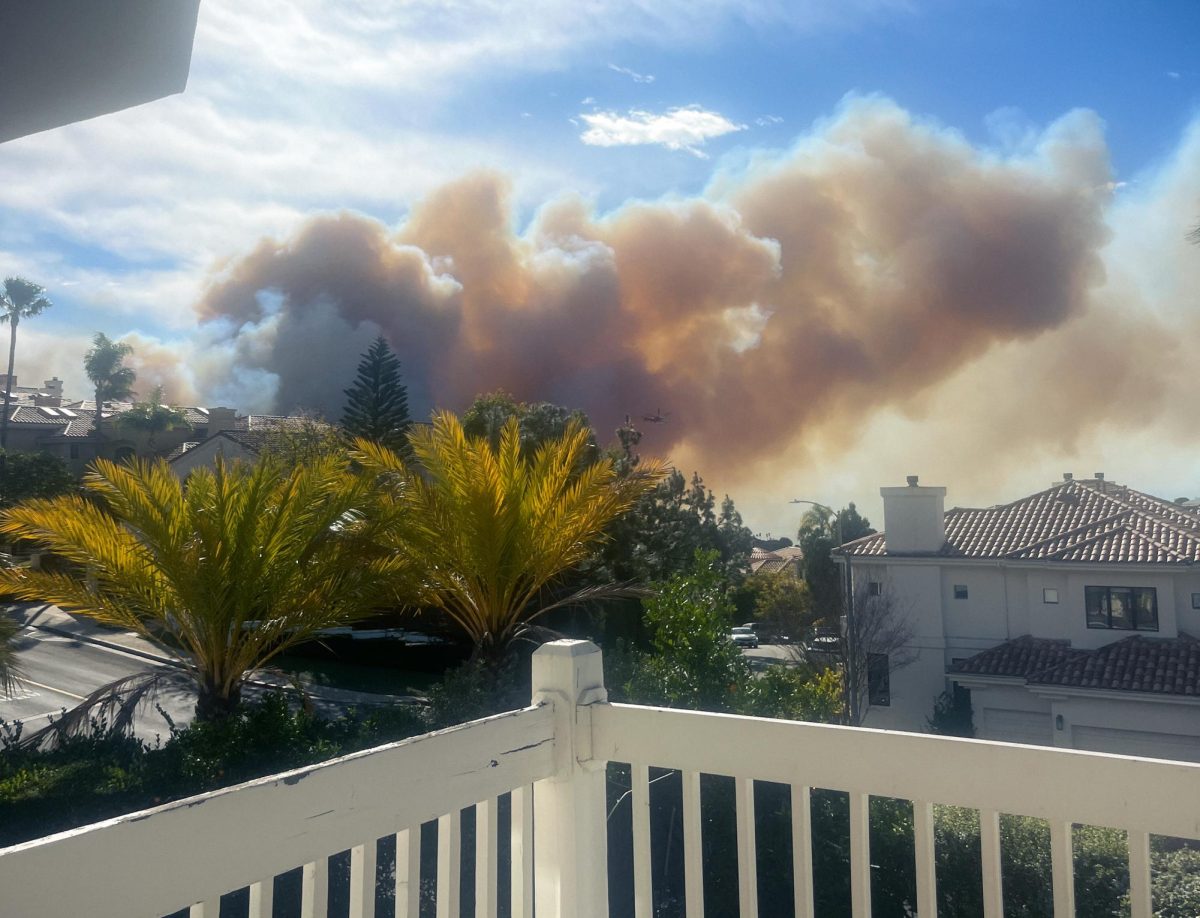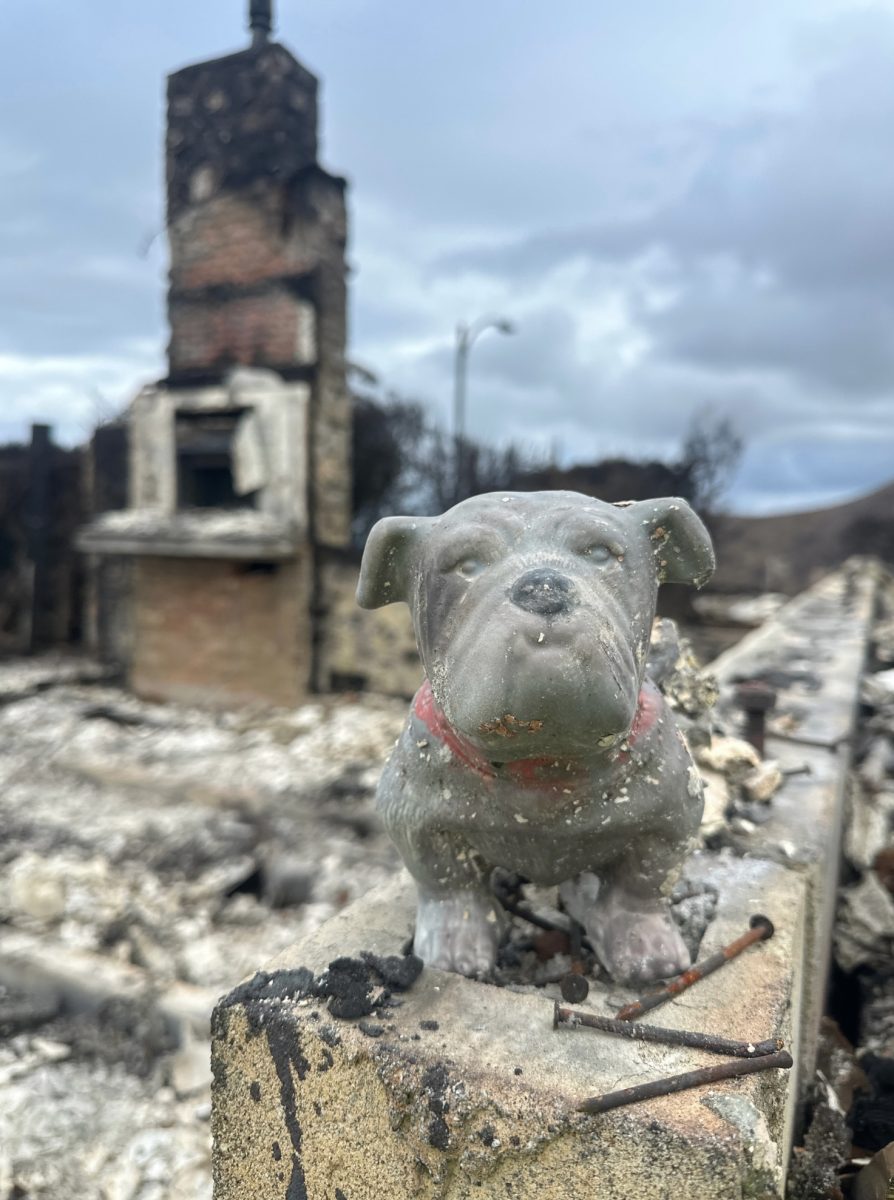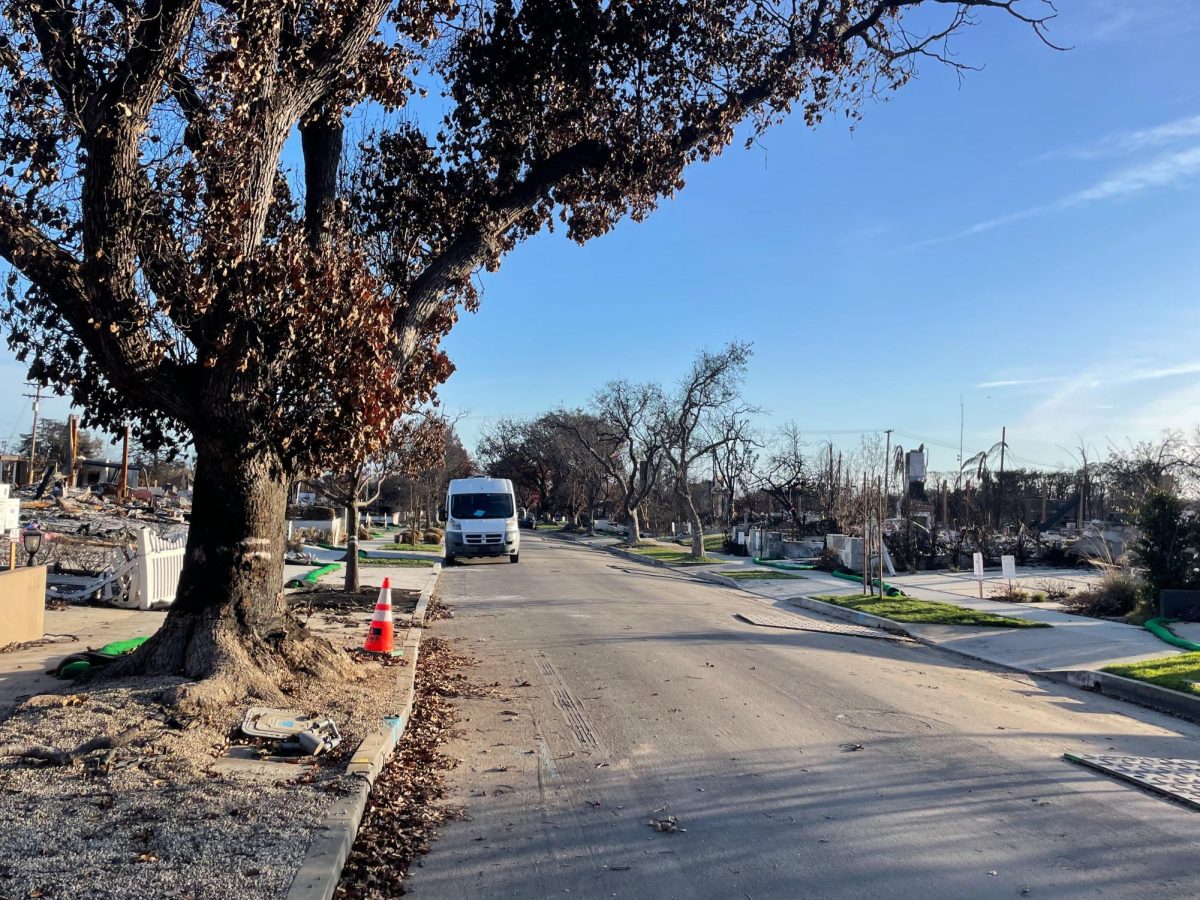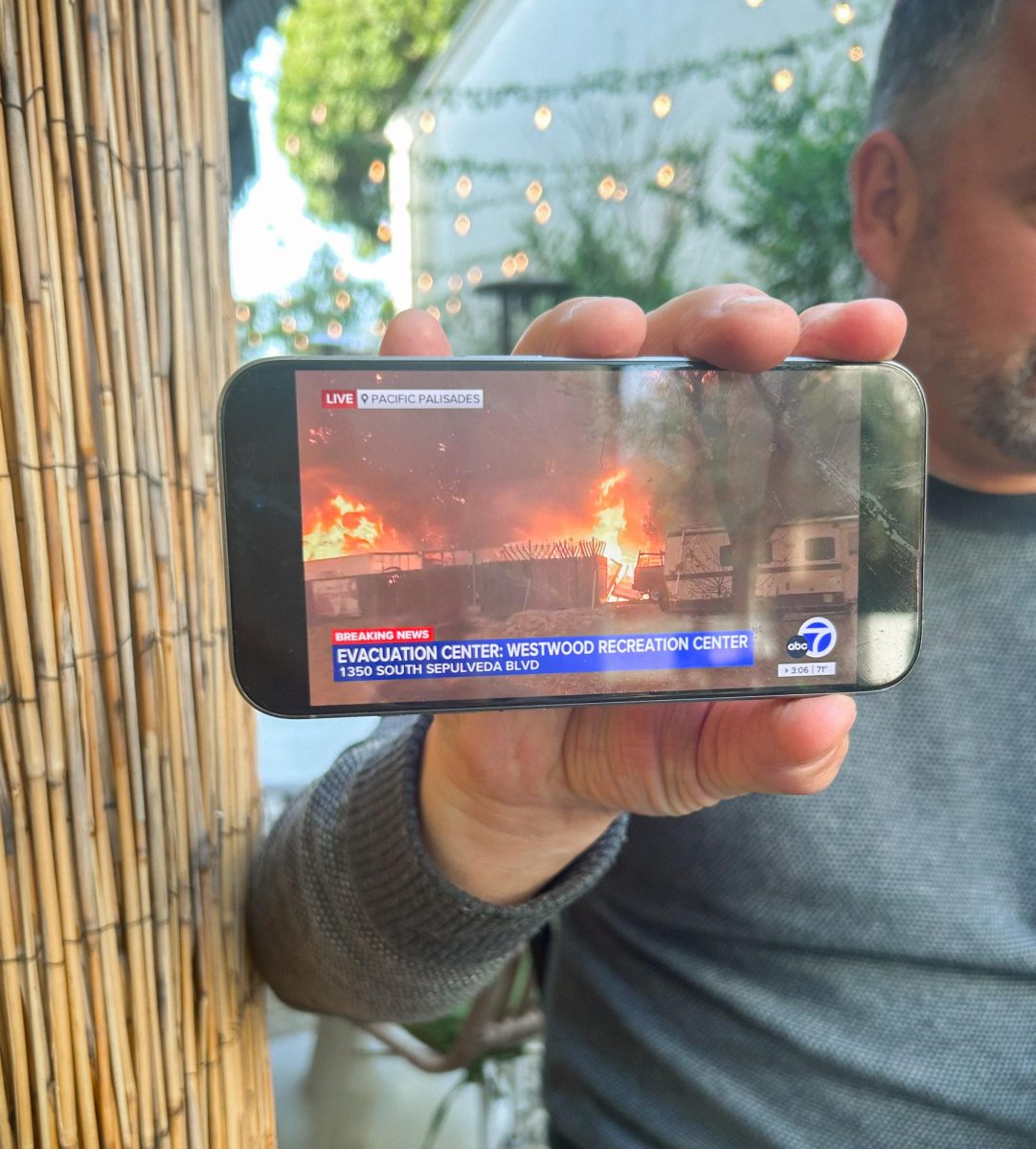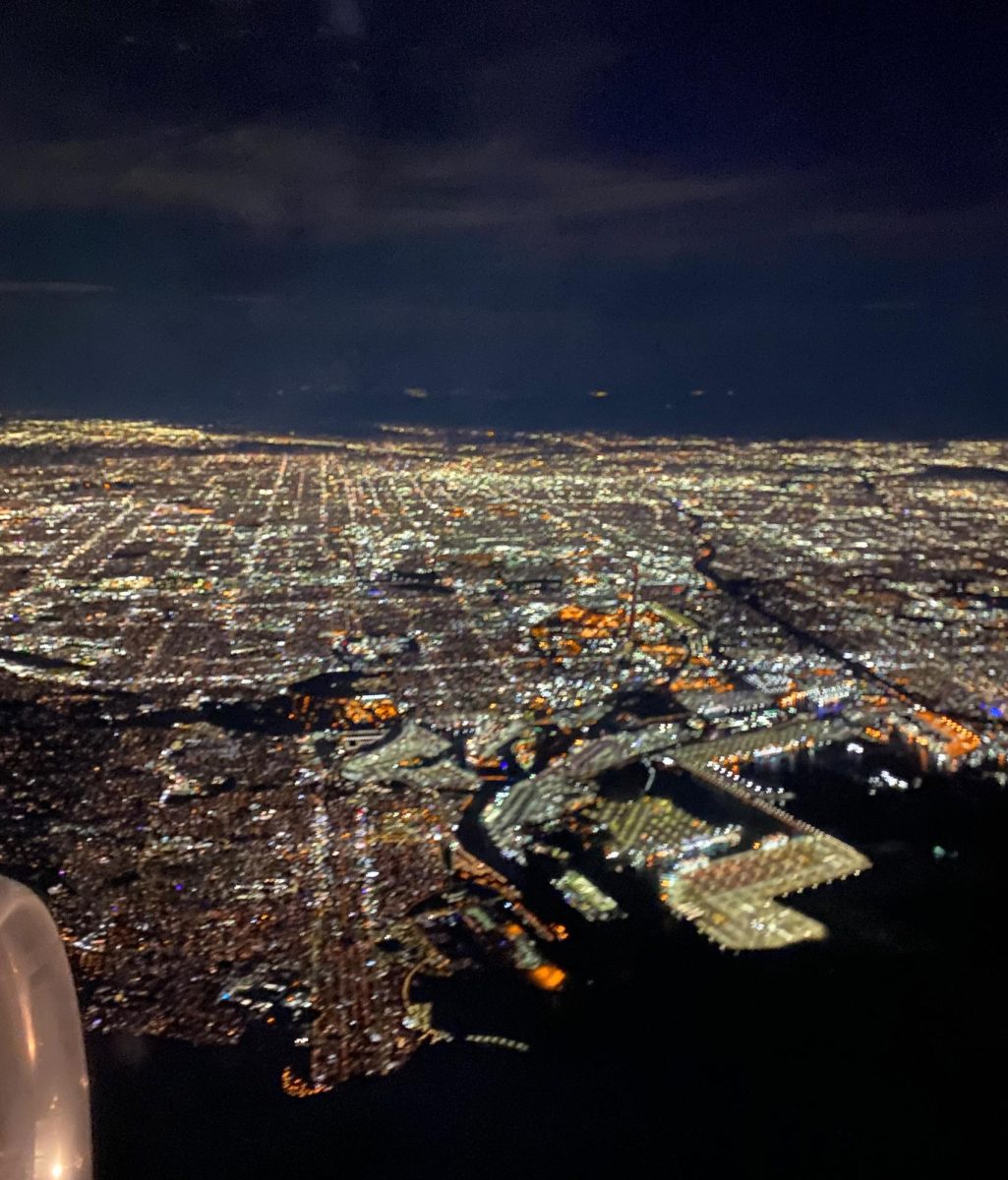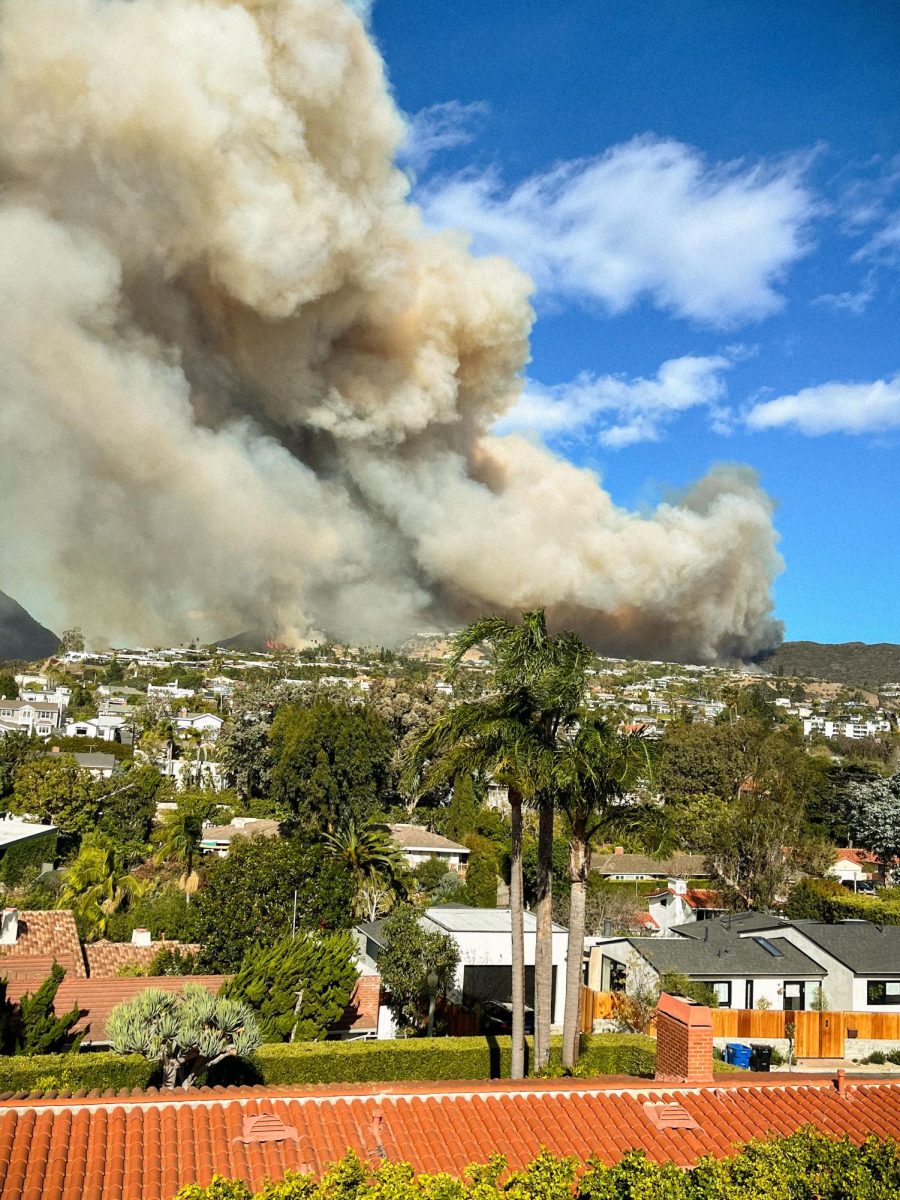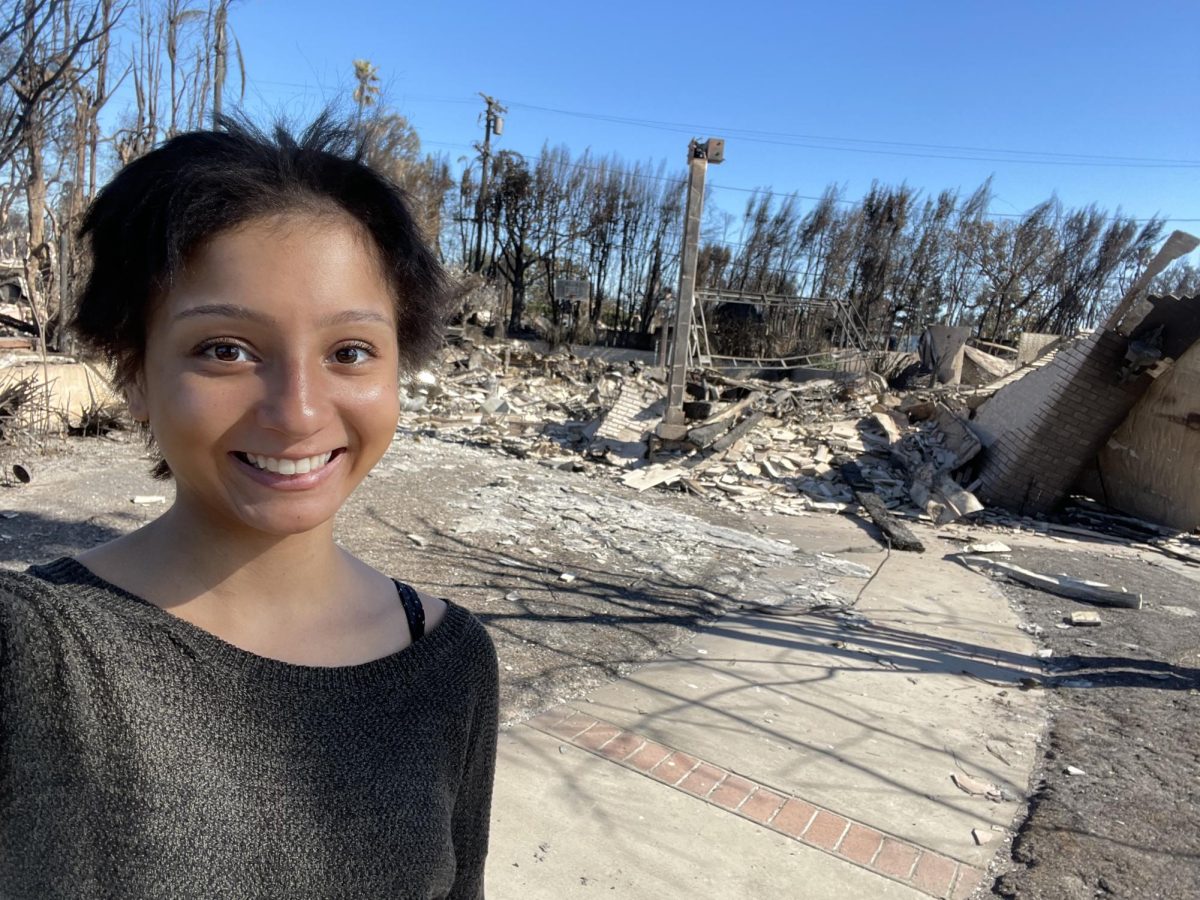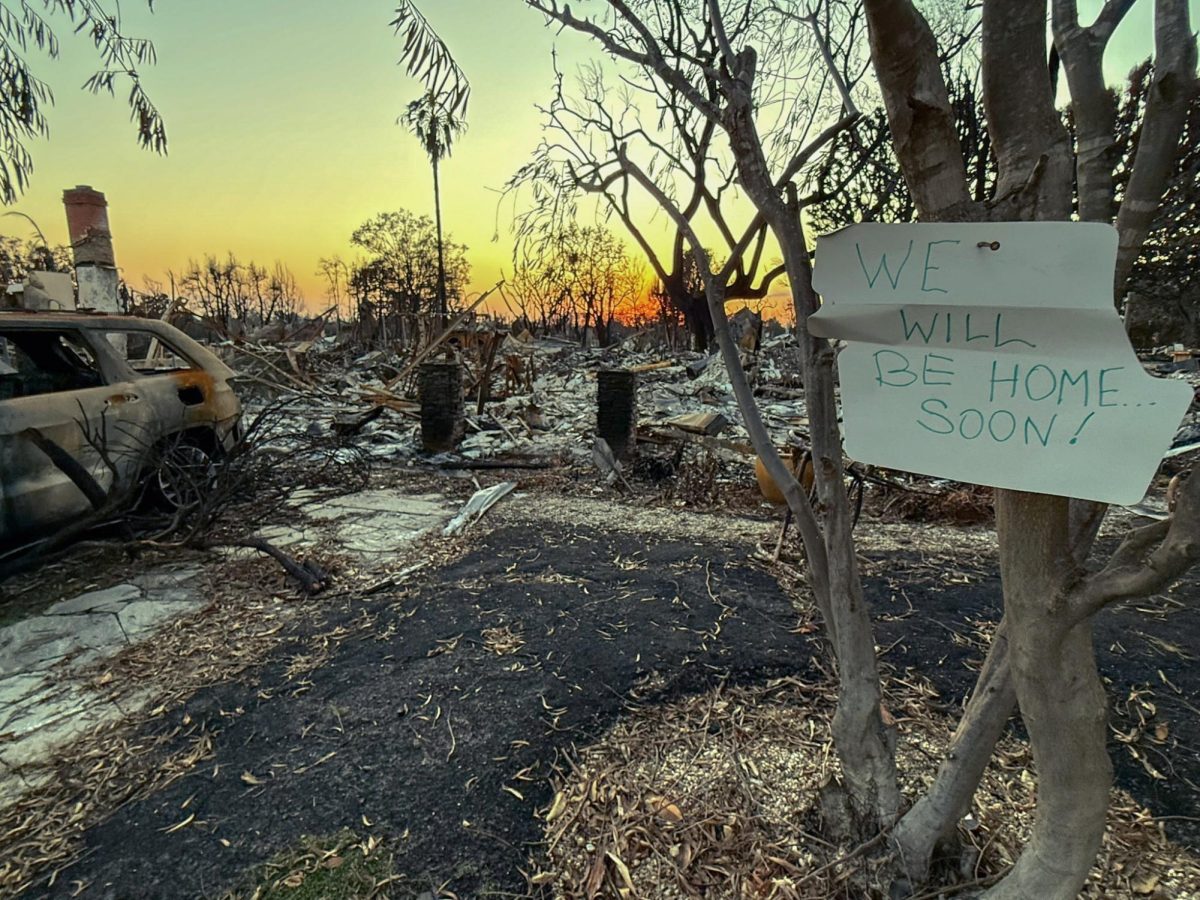Nick Melvoin Celebrates Earth Day at Pali’s Inaugural Climate Summit
June 7, 2022
Pali celebrated Earth Day on Friday, April 22 by holding its first ever Climate Summit Day. Activities included climate-focused lessons during fourth period and a press conference with Nick Melvoin, Vice President of the Los Angeles Unified District (LAUSD) board.
Junior Peter Garff, Co-President of Pali’s Human Rights Watch Student Task Force, kicked off the press conference by expressing his frustration with the slow progress of Pali’s environmental initiatives.
“As a junior at Pali, I’m disappointed to say that I’ve had zero in-class lessons about climate change and climate awareness,” Garff said. “Furthermore, despite extraordinary efforts by Pali administration staff, and of course the effort led by students, we have no concrete evidence of when Pali is going to transfer to 100 percent renewable energy.”
Pali students spent more than a year organizing petitions, meeting with LAUSD officials and writing and presenting to the school’s Board of Trustees the first student resolution focused on climate change. They also helped create Pali’s Clean Energy Task Force, which is spearheading a solar energy project for the school as part of a larger commitment to 100 percent renewable energy.
The Pali Board of Trustees unanimously passed the students’ resolution last May, not only committing to a solar energy plan but also to a climate education curriculum for students and employees. For the press conference, Pali’s transition to solar energy was the primary topic of discussion.
In response to Garff’s frustration, Melvoin began to enumerate LAUSD’s various eco-friendly initiatives. These included the district’s commitment to using clean, renewable energy to produce 100 percent of its electricity by 2030 and using sustainable energy sources for all other utilities by 2040. Melvoin also mentioned a resolution to make climate change education mandatory in K-12 as well as professional development for teachers to ensure they are adequately equipped to teach the subject.
Melvoin added that LAUSD has already switched its cars, trucks and buses to electric power and has initiated plans to replace gas powered lawn mowers with electric ones.
“We hope to do more and are looking for new ways to partner with the city, the county and the state to collaborate on ensuring that LAUSD is the greenest large urban school district in the country,” Melvoin said. “We’re in the process of buying another [campsite, which is] like a summer camp to run programs for students because I love the concept of getting kids to love the planet that we’re asking them to save.”
Melvoin went on to announce the LAUSD School Board’s decision to celebrate Clean Air Day. He also mentioned the installation of more than 100 air sensors to monitor air quality at every school in the District. However, Melvoin did not provide detailed information on Pali’s solar project in his opening remarks.
When pressed on the solar panel issue, Melvoin offered encouraging news. LAUSD was able to raise over $7 billion for multiple projects, which is the second largest school bond in the country. “That sounds like a lot, but $7 billion does not go as far as it used to,” Melvoin explained. “We have about $60 billion of unmet need in LAUSD, so $7 billion is getting us there. But one of the buckets is renewable energy and solar projects and we’ve already allocated certain dollars to go to these projects.”
He also said that the LAUSD School Board is working on a request for funding for seven different pilot projects. Low-to-no-cost solar panel installation is one of them, Melvoin said.
Although LAUSD officials say they hope to lead the city and the county in 100 percent renewable and sustainable projects, the goal is not without its challenges. There are budgetary, infrastructural and regulatory issues the District has to take into consideration, Melvoin explained.
During the press conference, student journalists directed the focus on the solar project’s timeline and how to push installation to as early as this summer.
“The challenge in the timeline is just securing the materials and securing the labor, and prioritizing that over the next few months,” Melvoin explained. “I don’t know that we’d be able to start on the project this summer, but I think really demanding from the District a date where it really will be on the Board’s agenda could be a good first step… That’s where I think your advocacy can be really helpful.”
In the meantime, the LAUSD Board of Education has given the final approval to provide heating, ventilation and air conditioning to Pali, the last school in the District to have air conditioning in its classrooms, at the April 26 meeting.
The solar proposal will have to wait until July before the LAUSD Board of Education reviews it.
Earth Day celebrations, however, were not limited to Melvoin’s press conference. Pali teachers were encouraged to present lessons centered on the climate crisis. This was a result of the joint student and faculty effort to make climate education a priority.
AP Spanish teacher Myrna Cervantes had two students create a slideshow presentation on environmental science. The information explained the importance of recycling and taking care of the planet, as well as the effects of carbon dioxide on the atmosphere. Students also discussed Pali’s transition to renewable energy, and how students can make individual choices that would benefit the environment.
Across campus, AP European History and Honors World History teacher Amir Osterweil had his students create a project about water conservation efforts in California. His students learned about the differences between direct and indirect water as they watched a video about water usage.
Meanwhile, Angelica Pereyra, co-sponsor of Pali’s Human Rights Watch Student Task Force, led her fourth-period class in a lesson on environmental sciences. She had the class create a paper chain on which they wrote their hopes and pledges for the environment. The chain was subsequently hung outside to allow others to add to it – or learn from it.
“Everybody wrote something that they can commit to or something that they wanted to share,” Pereyra said. “And they are uniting each one of their hopes and concerns and pledges to each other visually in this chain.”
As the climate crisis continues to affect the world, Pali students and staff are striving to make positive changes that impact the campus and the community as a whole.
Sarah Soroosh Moghadam, Arik Kraft, Gigi Appelbaum-Schwartz, Bailey No, Elise Larson, and Dohyun (Andy) Ju contributed to this report


